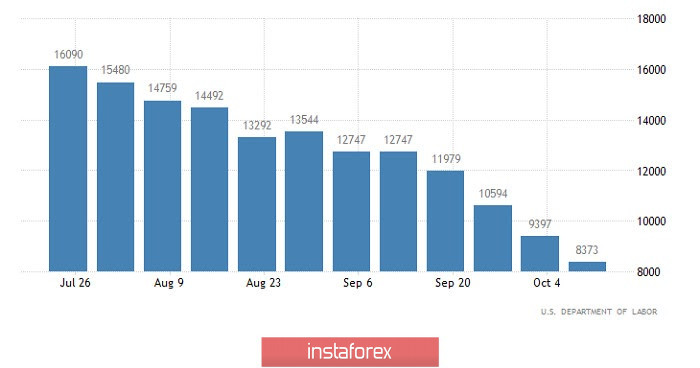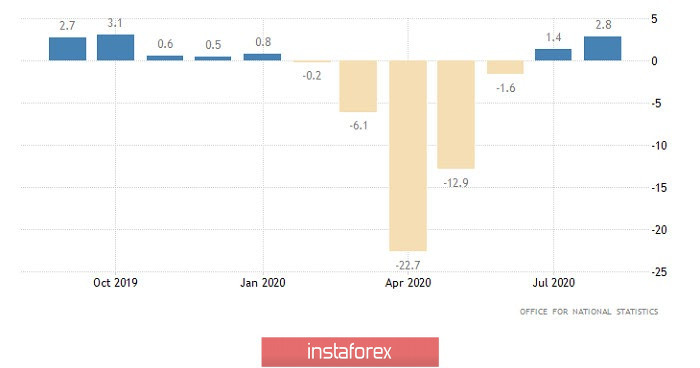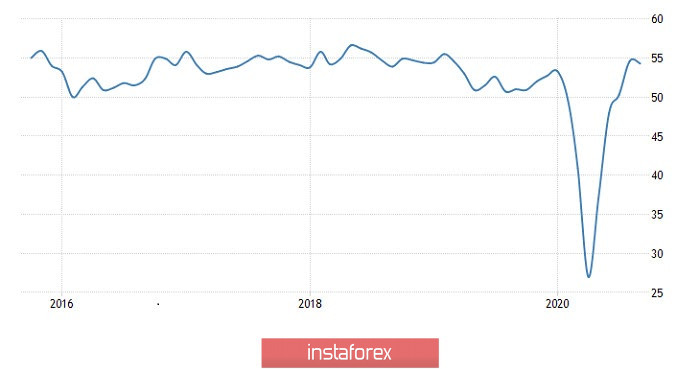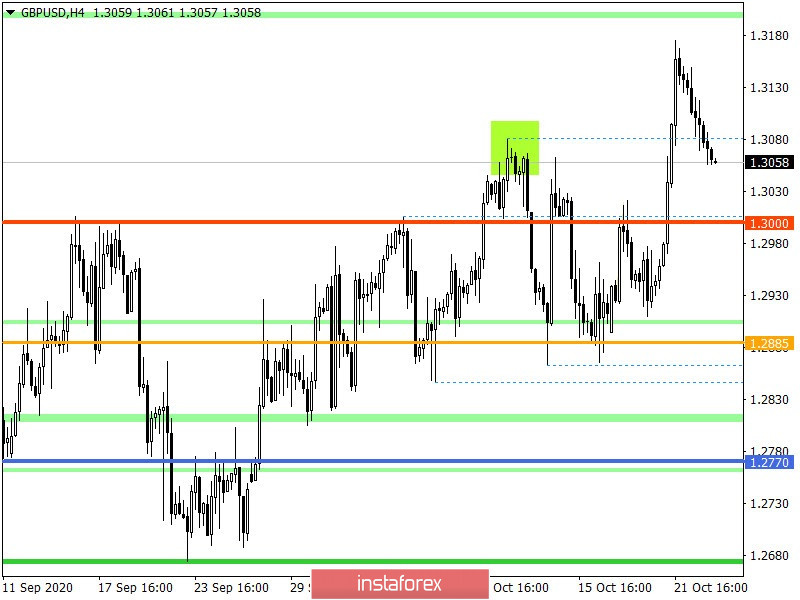It is clear that some semblance of a local rebound suggested itself by itself. That, in general, was observed yesterday. However, the pound's fall was largely symbolic. At the same time, the pound dropped not only because it is clearly overbought, but also because US macroeconomic data turned out to be good. So the pound could have dropped much more noticeably. Nevertheless, Brexit provided support. After all, negotiations on this issue began yesterday. Although there were assumptions that they will begin next week. In addition, the pound was encouraged by the news that while London was unsuccessfully trying to come to at least some kind of agreement with Brussels, it was able to sign a full-fledged trade deal with Tokyo.

The latest US report turned out to be good. The previous data was revised for the better. The number of initial applications reached 842,000 from 898,000. The number of repeated applications fell from 10,018,000 to 9,397,000. But besides this, figures were down. For example, the number of initial applications decreased to 787,000, and repeated applications to 8,373,000. Thus, the American labor market continues to recover somewhat faster than expected. And this, without any doubt, is an extremely positive factor. In addition, home sales in the secondary market grew by 9.4%. The total number of transactions increased from 5.98 million to 6.54 million. And this despite the fact that only 3.0% growth was projected.
Number of re-claims for unemployment benefits (United States):

The outlook for the pound is pretty good as negotiations have resumed and retail sales growth in the UK could accelerate from 2.8% to 3.4%. However, there is some skepticism about the Brexit talks, since London and Brussels' attempts to come to at least some kind of agreement have been unsuccessful for several years. So the experience of countless rounds of negotiations shows that these too will end in nothing. And investors, apparently, are in no hurry to buy the pound, but rather decided to wait for the results of these very talks. In addition, the UK is publishing preliminary data on PMIs, forecasts for which are disappointing. The index of business activity in the service sector should fall from 56.1 to 53.8, and the manufacturing index from 54.1 to 52.9. As a result, the composite PMI will decline from 56.5 to 53.6. And it turns out that the pound may well decline a little more.
Retail Sales (UK):

However, it looks like the pound's decline was limited yesterday, as the United States is expected to decline in business activity indices. The index of business activity in the manufacturing sector should remain unchanged. Although the index of business activity in the service sector may decrease from 54.6 to 54.1. So the composite PMI should decline from 54.3 to 54.0.
Composite PMI (United States):

The GBPUSD pair entered the stage of technical correction, which was quite expected against the backdrop of an intense upward move. The 1.3175 coordinate stood as a variable resistance level, where a correction emerged relative to it, thereby returning the pound to the limits of the previously passed level of 1.3080, but sellers did not stop there.
If we proceed from the quotes' current location, we can see that we have already managed to get the pair to settle below the value of 1.3080, which may well open the way to the main level of 1.3000 while maintaining the correction phase in the market.
As for volatility, there was a local slowdown yesterday, but this only fuels the interest of speculators.
Considering the trading chart in general terms, the daily period, we can see an attempt to recover from the inertial move on October 21.
We can assume that if the correctional move is retained, the pound will continue to fall towards the psychological level of 1.3000, where another slowdown while transitioning to a consolidation mode is not ruled out.
From the point of view of complex indicator analysis, we see that the indicators of technical instruments are signaling a sell sign on minute intervals, while the hourly periods continue to follow the inertial upward trend with a delay.






















